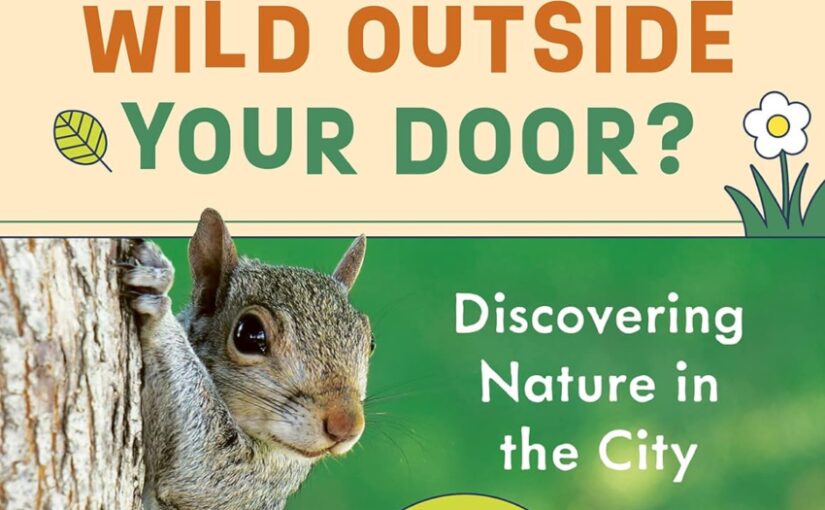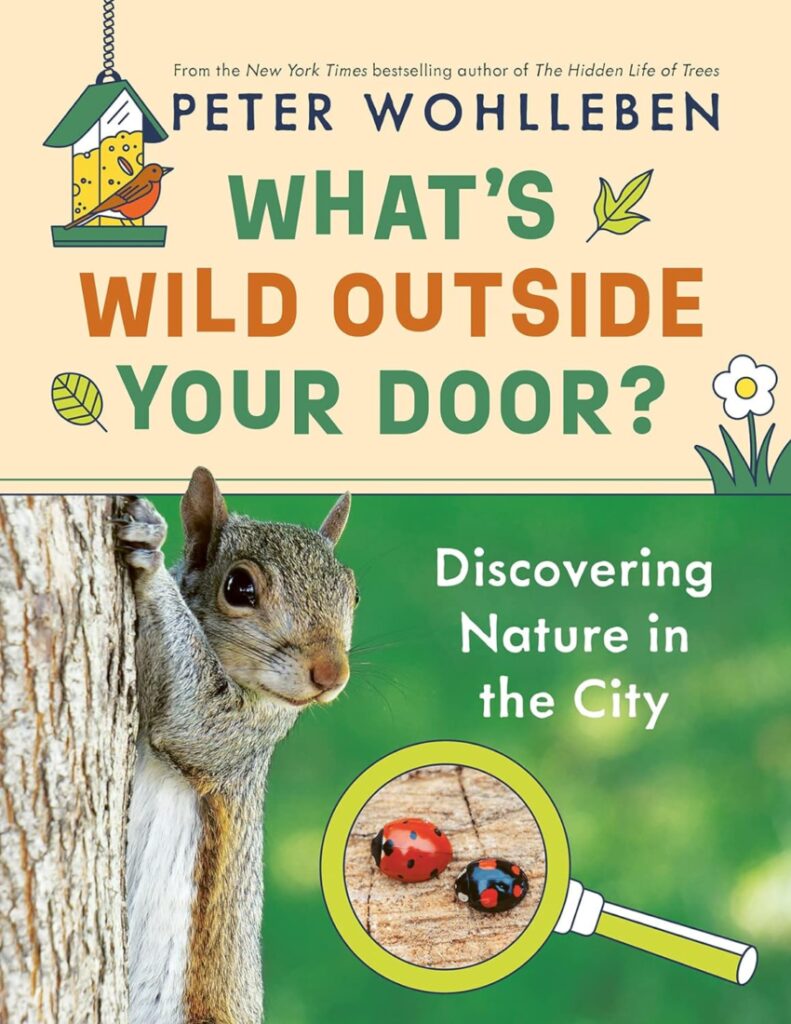I taught fifth-grade science for a bit one year and the content in What’s Wild Outside Your Door? is cut from the same cloth as many of those lessons. There’s a paragraph about the food web. That particular paragraph is exactly on the level as to what fifth-graders will learn about it. When you, or your young student are looking at What’s Wild Outside Your Door? the 500-pound gorilla that you might be subconsciously thinking about is Nat Geo Kids. All of those books, as well as, this book are non-fiction books that also have their circular feet in the vein diagram of reference books. This book is by Peter Wohlleben, who has written several other children’s non-fiction, reference books that operate on a different plane than their more well-known counterparts. So what is the difference?
This is where the teacher in me points out that everyone learns in different ways. The same can be said for how non-fiction books are presented, consumed and enjoyed by their audiences. What’s Wild Outside Your Door? and the other nature books from Wohlleben have big full-page photographs, illustrations, and content blurbs that list needed supplies or additional details on every page. The cover has a more textured feel to it and the interior pages aren’t as glossy as their Nat Geo Kids competitor.
There are five chapters in the book that explore getting ready, city exploration, exploring close to home, how kids can help, and a macro view of nature around us all. Every two pages present a different subject with approximately four or five paragraphs that are written on a fourth-grade level. Those paragraphs have blurbs, illustrations with puns, and rhyming text that will help make reading the book more fun.
What’s Wild Outside Your Door? is more likely to be read from start to finish, or at least broken down according to chapters. The colors and layout of the book is calmer and less manic than its more well-known non-fiction brethren. On the positive side, the book will keep those elementary school-age students engaged for a longer, consistent period of time once they open it. It treats those fourth and fifth-graders like the smart, budding STEM-curious kids that they are and doesn’t feel like it needs neon colors or 50-font text in order to bait the hook.
On the downside, kids will need to be curious enough in order to get through the book’s shell. Because of the attention-getting methods and short attention span of American students (what? we all know it’s true); educational text that doesn’t lead with large neon signs and a visual timpani isn’t going to get the attention that they need. As an educator and a parent, I know that children are capable of being much smarter than they display in class. However, left to their own devices, kids will take the easiest, least resistant path toward anything, which includes the vessels in which they learn or reinforce content.
The text in What’s Wild Outside Your Door? is well written and presented in a manner that most fourth-graders will be able to understand by themselves. It’s due to the fact that the book is more mature and intelligent that those middle school audiences will be able to learn or drive home the nature-borne lessons. They’re not lessons in the fact that they’re preachy or challenging to read. It’s not that it’s agenda-driven at all, it’s that they’re non-fiction topics that add up to part of a bigger chapter when they’re combined.
Students learn in different ways. Some need the casual, chilled-out approach, others need more enthusiasm and those rarer students are self-motivated and just do it. What’s Wild Outside Your Door? is a non-fiction reference book for ages eight and up that speaks to those in the first and third categories. If those manic students catch the book at the right time then they’ll learn the art of chilled-out learning and hopefully become more self-motivated.
What’s Wild Outside Your Door?, Discovering Nature in the City is by New York Times bestselling author, Peter Wohlleben, with illustrations by Belle Wuthrich and is available on Greystone Kids.
There are affiliate links in this post.






 Facebook
Facebook Twitter
Twitter Flickr
Flickr GooglePlus
GooglePlus Youtube
Youtube